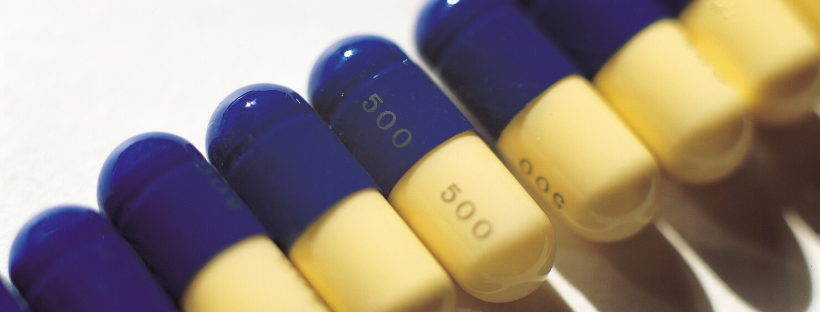On behalf of Prescription Justice, I submitted comments to the FDA in response to its request for public comments on its draft guidance called: “Importation of Certain FDA-Approved Human Prescription Drugs, Including Biological Products, under Section 801(d)(1)(B) of the Federal Food, Drug, and Cosmetic Act: Draft Guidance for Industry.”
I published the comments in their entirety on Prescription Justice here: https://prescriptionjustice.org/resources/blog/opportunities-safe-personal-drug-importation-under-section-801-public-comments-prescription-justice.
I have a different story to tell here about the new, or newish reimportation law.
Admittedly, I didn’t notice that the “reimportation” statute had been amended in 2017 until I read the FDA’s guidance and went back to the statute. It’s weird. The amended reimportation statute now deals with importation of drugs that are not made here and, as I see it, have nothing to do with re-importation but just importation. The old reimportation statute, Section 801 (d) stated:
“Except as provided in paragraph (2) and section 384 of this title, no drug subject to section 353(b) of this title or composed wholly or partly of insulin which is manufactured in a State and exported may be imported into the United States unless the drug is imported by the manufacturer of the drug.”
That’s what people referred to as the “ban” on reimportation, meaning drugs that are made in the U.S., and exported can’t be sent back to the U.S. unless the drug manufacturer wants it (or the government says it’s an emergency, which is irrelevant for our purposes). Canadian pharmacies sell these American-made drugs at much lower cost, but that law prevents companies from buying those drugs and re-selling them here. While that ban was put in place to stop companies from reimporting and selling American-made drugs in the commercial market, it can stop patients from reimporting a drug they bought in a foreign country for their own use.
But 801(d) never put that ban in place for foreign-made, FDA-approved drugs. Now it does – but there’s an incredible caveat. The new statute states:
“…no drug that is subject to section 353(b)(1) of this title may be imported into the United States for commercial use if such drug is manufactured outside the United States, unless the manufacturer has authorized the drug to be marketed in the United States and has caused the drug to be labeled to be marketed in the United States.” Emphasis added.
The new restriction means that a person can’t import foreign FDA-approved drugs for commercial use unless the manufacturer allows it. Many people thought this was already the law, but they were wrong. There are other laws in place that made such imports challenging but not prima facia illegal. Businesses that tried to do this — buying FDA-approved drugs in a foreign market and labelling them in accordance with FDA rules and re-selling them in the U.S — rubbed up against intellectual property and misbranding rules. Finally, with the Drug Supply Chain Security Act tightening the rules further, someone from the FDA or the drug companies probably asked their friends in Congress to amend the statute to prevent businesses from finding loopholes to import commercial quantities of prescription drugs, except for the manufacturers of those drugs, under any circumstances.
They did not have to include the phrase “commercial use.” The
law could have read: “no drug that is subject to section 353(b)(1) of this
title may be imported into the United States for commercial use
if such drug is manufactured outside the United States.”
This doesn’t mean personal drug importation is legalized. It just means that 801(d)(1)(b) doesn’t ban imports for personal use. And if that helps someone afford their medication, cool.
And in my comments to the FDA on Section 801 for Prescription Justice, I ask a lot of questions about how this might help create more regulated pathways for safe personal drug importation.
In a nutshell, the FDA appears to be calling the bluff of some unnamed drug companies who have said they are interested in importing their drugs at lower prices. These are FDA-approved drugs that are made outside the U.S., exported here and sold in U.S. pharmacies, but also sold in other countries, too. Due to contracts that drug companies have with third parties, they are actually locked into a certain list price. Those contracts are based on NDC numbers, unique codes tagged to the drug package. The FDA’s draft guidance provides a path to create a new NDC number for the same drug, one that is also approved for sale in a foreign market. I explained this in a little more detail when the Trump administration first announced this plan, which was referred to as Pathway II.
Maybe this will lead to a few drug companies offering buyers who service the cash paying prescription drug market lower prices, but that’s not what was interesting to me. What is interesting is that it shines the brightest light I’ve ever seen on the fact that the drug companies are selling the exact same drugs in other countries but at much lower cost. It’s super nice of the FDA to encourage Big Pharma drug companies to lower their imported wholesale drug prices by changing the NDC numbers in a manner that won’t dent their profits. Maybe, just maybe, they will create a clearer pathway, (can I get a pathway III?), for consumers to actually benefit from new importation rules.
Tagged with: reimportation



I have just taken 3 100mg. Quetiapine tablet’s as I bipolar identity disorder.-